Selecting the correct ladder for a job is crucial for both safety and efficiency. Whether you are a seasoned contractor or a homeowner embarking on a DIY project, understanding the differences between a step ladder and a rung ladder is vital.
In this step ladder vs rung ladder article, we will explore what sets these two ladder types apart, their advantages, and the situations in which each is most suitable.
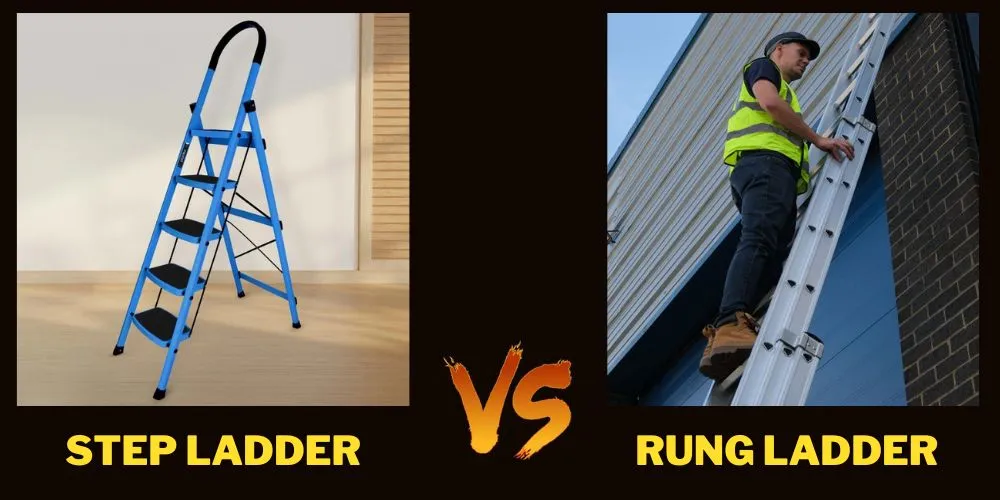
Understanding Step Ladders
A step ladder is a self-supporting ladder with a fixed height. It features an A-frame design, which provides the ladder with stability that allows it to stand independently without needing to lean on a wall or another support.
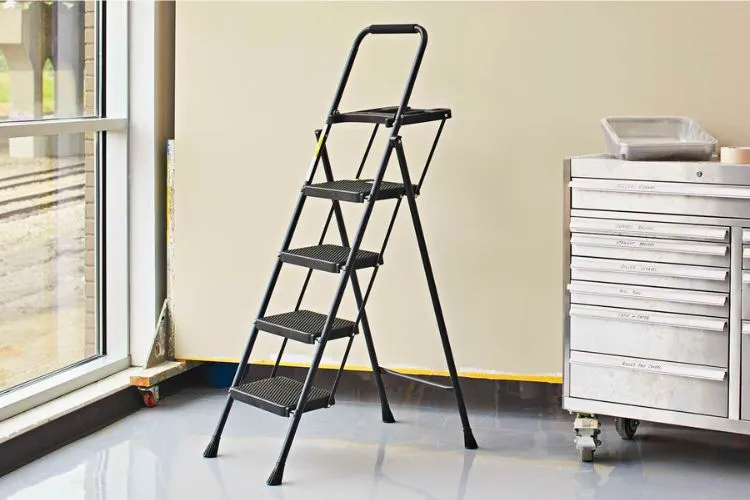
Advantages
Step ladders bring several benefits to the user. Their A-frame design ensures stability, making them less likely to tip over.
They are self-supporting, which means you can position them wherever they are needed. Many step ladders come with a platform at the top for resting tools or paint and may even include handrails for added safety.
Common Uses
These ladders are particularly well-suited to indoor tasks. From painting walls to changing light bulbs, step ladders are convenient for jobs that require a stable work surface at a moderate height.
They are also typically safer and more comfortable to use than rung ladders for short-term tasks around the house.
Understanding Rung Ladders (Extension Ladders)
Rung ladders, or extension ladders, consist of two or more sections that can extend to reach higher points. Unlike step ladders, rung ladders are not self-supporting and must lean against a structure for support.
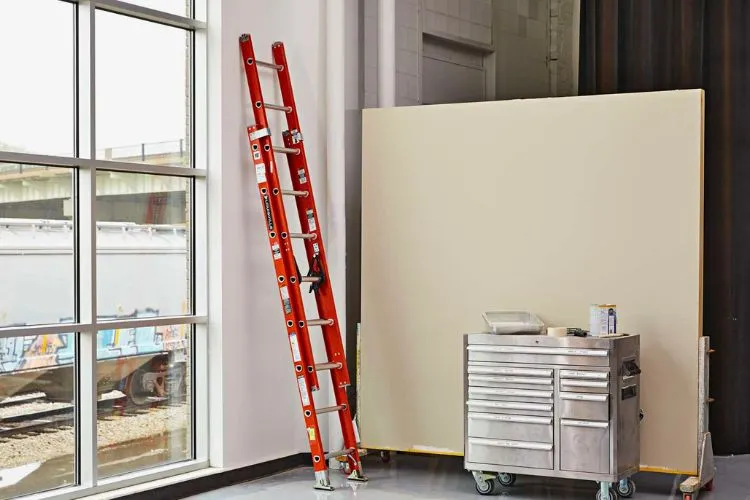
Advantages
One of the main advantages of a rung ladder is its reach. It can be extended to tackle jobs that are far above ground level, from cleaning gutters to fixing rooftops. The height is adjustable, and when collapsed, it is relatively easy to transport and store.
Common Uses
Extension ladders are best used for outdoor jobs that require significant height. They are perfect for reaching high exteriors of a building, trimming tall trees, or any task where a higher reach is necessary.
Step Ladder vs Rung Ladder: Key Considerations
When choosing between a step ladder and a rung ladder, safety is the primary concern. Step ladders offer greater stability and may be the safer choice in many scenarios.
Rung ladders require a careful setup at the appropriate angle and secure placement against a solid structure. It is also essential to select a ladder of the proper height to avoid overreaching and risking a fall.
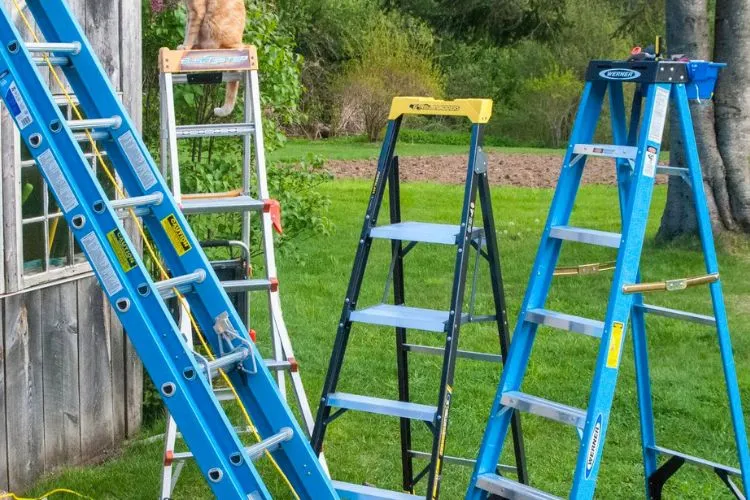
Portability
Considering the weight and the ease with which you can move the ladder is essential. If you need to move your ladder frequently, a step ladder may be more manageable.
However, a telescoping rung ladder can be easy to transport despite its potential height advantage.
Height Requirements
It’s crucial to match the size of the ladder to the height of the tasks. If the job is out of reach with a step ladder, a rung ladder might be necessary.
However, for tasks at or below the height of a step ladder, it’s best to choose the step ladder for safety and convenience.
Task Specifics
Finally, consider the specifics of your task. Indoor work that requires steadiness and the ability to stand at height for extended periods would be more suitable for a step ladder. Conversely, a rung ladder is typically more appropriate for outdoor tasks.
Pro Tips for Ladder Safety
It’s critical to keep safety at the forefront of any ladder use. Always follow the 4-to-1 rule when using extension ladders for every four feet of height you’re climbing, move the base one foot away from the wall.
Ensure that the ladder’s feet are on solid and level ground to prevent tipping. Before using any ladder, inspect it for damage or wear and tear. Finally, be certain to adhere to the manufacturer’s guidelines for maximum load to prevent overloading the ladder.
Maintenance and Care for Longevity
Step Ladder Care
Regular cleaning of your step ladder can prevent buildup that may compromise its safety. Make sure to check locking mechanisms every time the ladder is used to ensure they are in good working order.
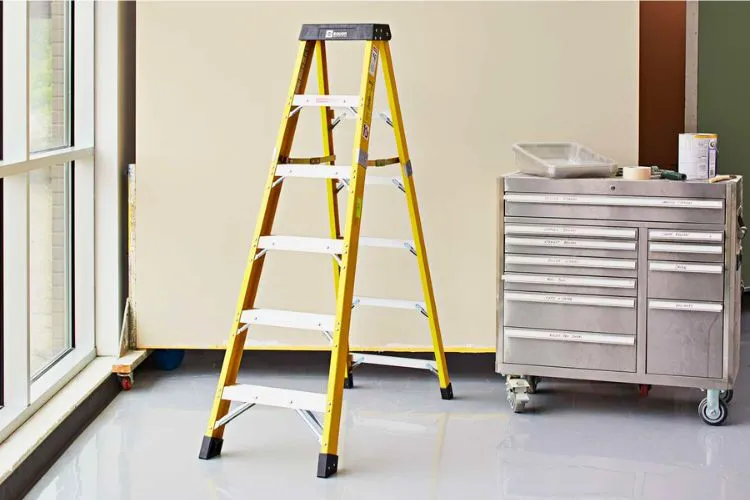
Rung Ladder Care
For rung ladders, it is especially important to inspect for bending or breakage, as the moving parts are subject to more wear. Lubricating these parts periodically can keep the ladder functioning smoothly and extend its life.
Innovative Features in Modern Ladders
Ladders today come with many innovative features that can enhance safety and usability. Materials such as lightweight aluminum make ladders easy to carry without compromising strength.
Multi-position and telescoping designs provide versatility, and added safety features like anti-slip pads and wider steps can prevent accidents.
Frequently Asked Questions (FAQs)
What is the safest type of ladder to use?
The safest ladder is the one that fits your specific needs best and is used according to safety guidelines. Ensure that it is suitable for the height and type of work and that it is stable and secure.
How do I determine the right ladder height for my task?
Measure the highest point you need to reach and choose a ladder that reaches that height without standing on the top two rungs.
Can step ladders be used outdoors?
Yes, but ensure they are placed on a stable, level surface and that they are appropriate for the task and conditions.
How do I properly store my ladder to extend its life?
Store your ladder in a cool, dry place out of direct sunlight and away from harsh weather conditions.
Are there any regulations or standards for ladder safety I should be aware of?
Yes, OSHA and ANSI have guidelines and standards for various types of ladders. Be sure to understand and follow these when using any ladder.
Conclusion:
Choosing the right ladder for the task at hand is an important decision that can have a significant impact on both the ease and safety of the work you’re doing.
Be sure to consider the specific requirements of your project, and always err on the side of caution by selecting the most stable and appropriate ladder for your needs.
This article provides a comprehensive guide to understanding the differences between step ladders and rung ladders. With safety at its core, it offers practical advice for selecting and maintaining the right ladder for a wide array of tasks.


